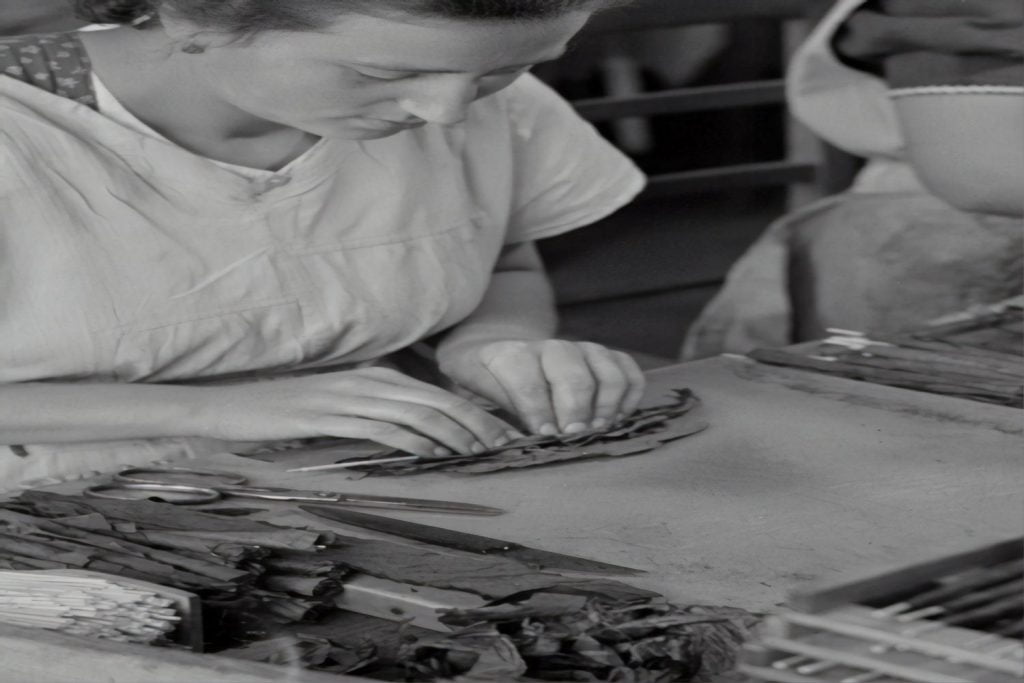A lot of precision goes into the making of cigars. With the way cigars have moved from just a luxury item to a popular luxury item with a following, great interest is taken by cigar aficionados and curious enthusiasts and investors in the process that gives us the cigar as we know it. This applies similarly to how cigars are rolled.
The art of rolling cigars is a profoundly gifted undertaking. You’re probably not qualified to roll your cigar at any point in the near future. However, doing enough research and figuring out how to roll a cigar can help you value the craftsmanship. After all, there are many things to follow that go into making a top-notch, handcrafted cigar.

The Cigar Rolling Process
The Cigar Roller
We can go no further unless we truly comprehend that the roller plays a role in the greater scheme. The roller is the person who completes the cigar by putting the finishing leaf. However, in certain activities, the roller likewise handles the assignment of the buncher. The buncher has the obligation of putting together the binder and the filler leaves in a wrap and afterward setting that incomplete cylinder into a shape and press. It is not that easy to know who the best rollers are as they generally sit in the front in any pressing room.
The Buncher
The buncher’s abilities are centered around bundling the long filler, generally three or four leaves, and collapsing or crushing or slicing the leaves to make them the fitting length for the cigar being made. The buncher is the person who ensures the leaves are stuffed together in a manner that helps the air to course aptly through the chamber. The bundled tubes are then assembled in a wooden cast for about 60 minutes, now and again being rotated 180 degrees every 30 minutes.
Testing the Draw of the Cigar
In numerous advanced manufacturing plants, the following stage is to test the draw – the wind flow– in the unbound cigars. In many plants, a machine known as the Drawmaster is used. This machine mirrors the action of a cigar smoker and pulls in air through the cigar being observed. A draw score is recorded for analysis against the expected limits. A few production lines, the ones that have exceptionally experienced bunchers and rollers, don’t waste time with the Drawmaster.
Applying the Wrapper Leaf
Now comes the ideal opportunity for the covering to be moved onto the binder that encompasses the filler. A long time before the type of wrapper leaves are rolled, they are chosen by shading, tenderness, and flexibility. The wrappings are soaked to keep them damp prior to being put on the tables for rolling. The packed cigars are taken to the tables, and the bunchers do their thing.
Every roller has a blade with an expansive bent edge known as a chaveta that is very sharp, so it will not draw at the leaves. On the off chance that there’s a wandering vein on the covering leaf, the roller cuts it rapidly with the chaveta. The covering leaves are then sliced to fit the particular size of the cigar being rolled, ordinarily in a curvy bend so it will wind over the outside of the binder consummately, starting at the foot of the cigar and turning and softly extending the leaf simultaneously. Incidentally, a little plant-based paste is applied in spots to ensure the covering holds.
Adding the Cap
The final phase of the rolling process – applying the cap at the head. The cap is a little piece of covering that encompasses the top of the cigar. It needs to coordinate the remainder of the covering. The Cuban technique employs the technique of a ‘triple cap.’ The initial segment is a bit-sized, round piece of the covering leaf.
The following piece is punched out of the covering with a device called a ‘punch cutter.’ It punches a dab out of the covering. This is connected to the cigar head using an organic adhesive. The third piece is a dainty strip from the covering, folded over the cigar’s shoulder’. This assists in holding the cap in a steady stance.
This is known as a ‘mounted head’ and is a strategy utilized among some top-notch cigar producers. Outside of the Cuban method, the cap is just a round piece of the covering applied to the head.

Inspecting the Finished Cigars
The investigation of finished cigars considers the shade of the cigar coverings, even those that have a decent draw. On the off chance that the wrapper leaf seems strange, is too dim, too pale, or too coarse, that specific cigar is regularly placed in an alternate heap. The examiners additionally search for spots and different flaws. For a cigar to fit the bill to go into a case of premium cigars, it must be great, the perfect tone and equivalent to the others in the crate.
Aging the Cigars
On the cap’s application, the cigars are moved to a maturing room, and there they rest for 21 days at a minimum. This prompts the different tobaccos to ‘coalesce,’ or mix. This leads to a wholesome equilibrium. It is considered standard practice for cigars to age for a half year or more before being shipped off to market.
Packaging the Cigars
Following the maturation process, the cigars are investigated again and arranged into bundles of 25 (usually, the number is going into a case). The assessors are searching again for contrasts in shading and any noticeable defects like breaks or spots on the coverings. If the cigar fits the bill, it is placed into the container (typically bound with cedar).









